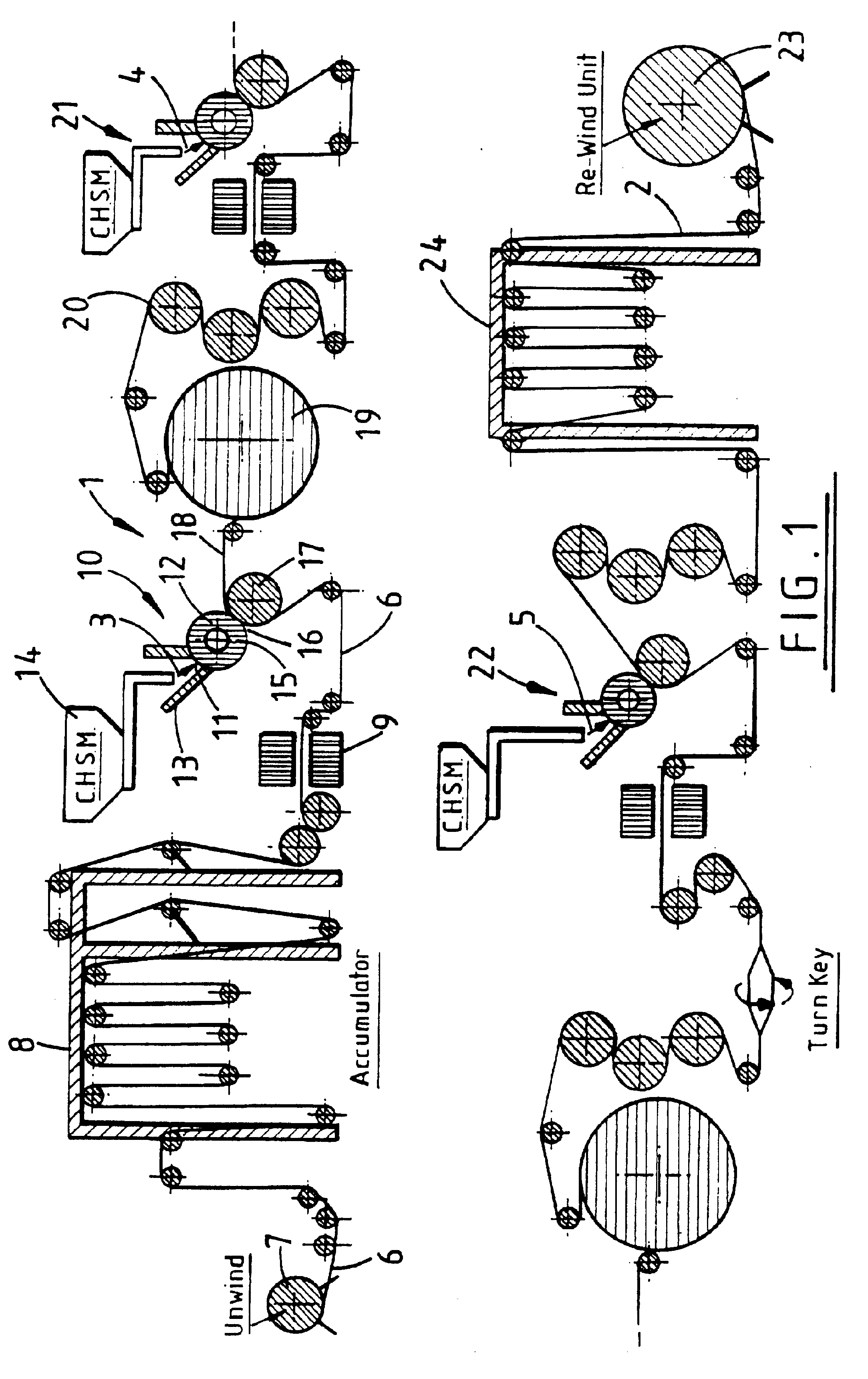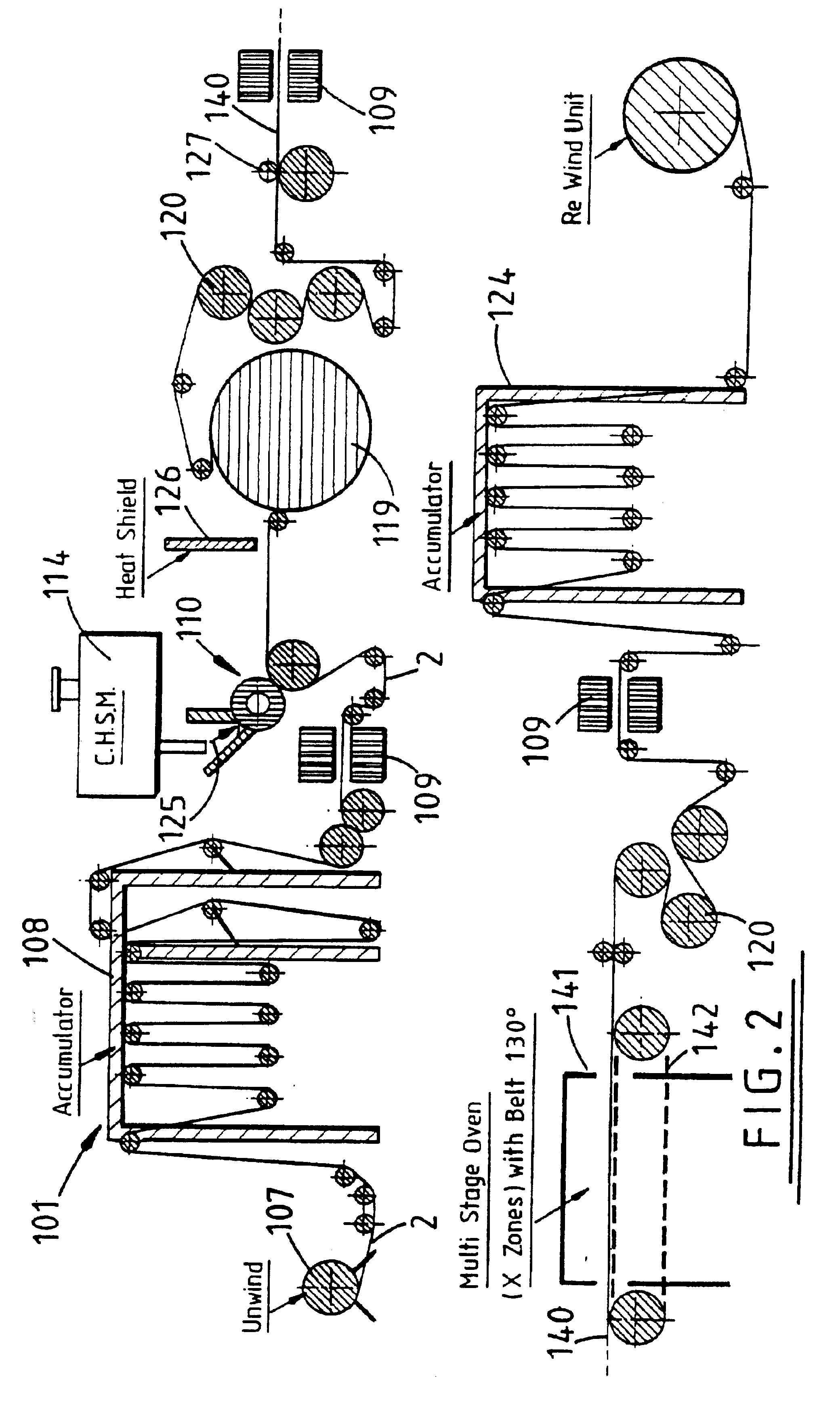Floor coverings
a technology for floor coverings and plasticizers, applied in the field of floor coverings, can solve the problems of not being suitable for floor covering manufacturing facilities, not providing the physical characteristics required in the final product, and pvc raising significant environmental problems, etc., and achieves the effect of small amount of plasticiser
- Summary
- Abstract
- Description
- Claims
- Application Information
AI Technical Summary
Benefits of technology
Problems solved by technology
Method used
Image
Examples
example 2
Preparation of Multi-Layer Floor Covering Using Spread-Coating
In example 2, the same sequencing of steps and stations are used as in Example 1, except that each application station involves a melt spreading operation rather than a melt calendering operation. The composition of all the four layers is the same except that 80 parts of Jayflex 215 and 20 parts of monomer X980 (a crosslinking monomer from Rohm & Haas) are added to each of the four formulations.
It will be appreciated that various modifications may be made to the above described embodiment with out departing from the scope of present invention. Thus for example Electron Beam initiated crosslinking can be an alternative or supplemental process to chemically initiated crosslinking. Such crosslinking can be accomplished by subjecting a sample to high-energy electrons at a dose of about 6 to 8 mega rads over a 30 second to 2 minute period. The addition of a reactive monomer such as methylolpropane trimethacrylate (TMPTMA) at a...
example 4
Individual Layer Formulations
A further set of polymer resin formulations is prepared as in Example 1 above but with Dow Chemical Co.'s AFFINITY SM 1250 as the MPO Resin component in place of EP 8500.
PUM
| Property | Measurement | Unit |
|---|---|---|
| molecular weight distribution | aaaaa | aaaaa |
| temperature | aaaaa | aaaaa |
| molecular weight distribution | aaaaa | aaaaa |
Abstract
Description
Claims
Application Information
 Login to View More
Login to View More - R&D
- Intellectual Property
- Life Sciences
- Materials
- Tech Scout
- Unparalleled Data Quality
- Higher Quality Content
- 60% Fewer Hallucinations
Browse by: Latest US Patents, China's latest patents, Technical Efficacy Thesaurus, Application Domain, Technology Topic, Popular Technical Reports.
© 2025 PatSnap. All rights reserved.Legal|Privacy policy|Modern Slavery Act Transparency Statement|Sitemap|About US| Contact US: help@patsnap.com



